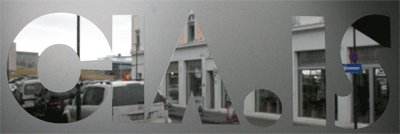Reinventing Harbour Cities
dal 24/4/2008 al 9/5/2008
Segnalato da
Adriaan Geuze
Christopher Marcinkoski
FREEE art collective
Jurgen Bruns-Berentelg
Louise Mielonen Grassov
Olafur Elíasson
Ute Meta Bauer
Vito Acconci
24/4/2008
Reinventing Harbour Cities
Center for Icelandic Art, Reykjavik
This international conference aims to open such a discussion by focusing on urban development and the role of art in public spaces of harbour cities. The development, privatization, and changing identities of cities that have grown as a result of their seaside locations present critical challenges for urban planners as well as for artists.

Participants: Adriaan Geuze, West 8 (Rotterdam) | Christopher Marcinkoski, Field Operations (New York) | FREEE art collective (London) | Jürgen Bruns-Berentelg, HafenCity (Hamburg) | Louise Mielonen Grassov, Gehl Architects (Copenhagen) | Ólafur Elíasson (Berlin, Copenhagen) | Ute Meta Bauer, MIT (Cambridge) | Vito Acconci (New York)
Harbour cities have long been formed by industrialization, shaped by international trade and constantly confronted with the untamed power of the ocean. Today, these cities compete on a global stage as they create new identities, new images to attract foreign business and tourists. As the industrial zones of business harbours are moving out of city centers to the outskirts of towns, prime waterfront areas are opening up for the development of commercial, residential, and leisure spaces. It is about revitalization of entire districts, a constant restructuring of city life, rejuvenating individual and community engagement with and within the urban environment, or in short: Reinventing Harbour Cities. Culture—measured in part by avant-gardist concepts and perspectives, architectural attractions and artist works—plays a significant role in creating cities’ new identities. Recently built concert houses and museums are emergent landmarks, parks and squares have become the stages for various art forms and performances, and all are important links to the social life of inhabitants and visitors alike.
Reykjavík, the largest city in Iceland and the world’s northernmost capital, has seen enormous economic and cultural growth in recent decades. As the harbour and public spaces within the city continue to develop, policymakers, corporations, urban planners, artists, and individuals have a shared responsibility to discuss how Reykjavík’s future will be shaped for all who live and work here.
This international conference aims to open such a discussion by focusing on urban development and the role of art in public spaces of harbour cities. The development, privatization, and changing identities of cities that have grown as a result of their seaside locations present critical challenges for urban planners as well as for artists living and working within these cities. As private companies and investors have increasing power in terms of reinventing urban landscapes both physically and culturally, this presents a crucial opportunity for artists to reconsider their own potential to help shape public space.
The conference will be organized by CIA.IS – Center for Icelandic Art in cooperation with Listaháskóli Íslands (Iceland Academy of the Arts) and the Nordic House.
25 April 2008, 6p.m. - 8 p.m.
10 May 2008, 10 a.m. - 5 p.m.
Center for Icelandic Art
+354 5627262 - Reykjavik



